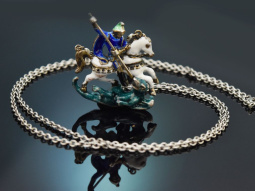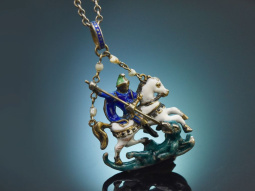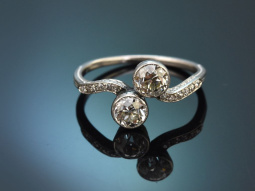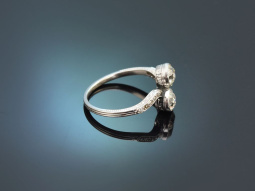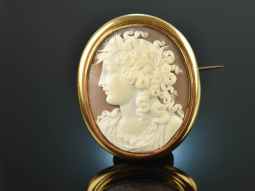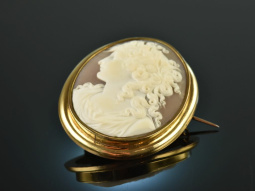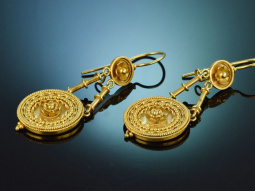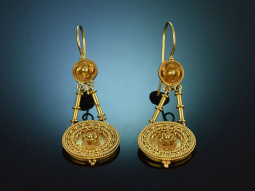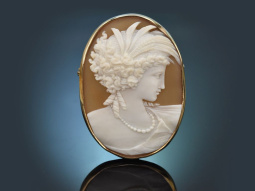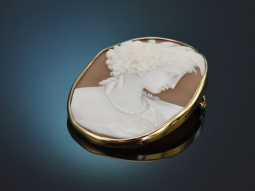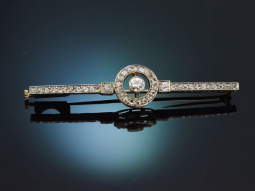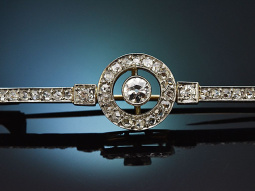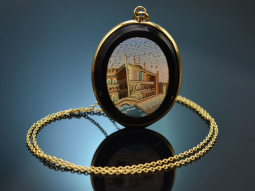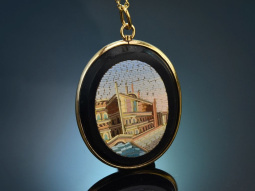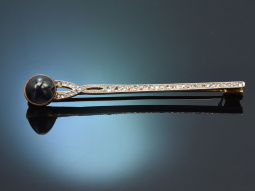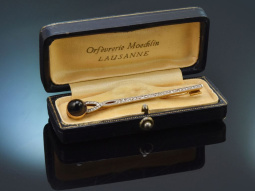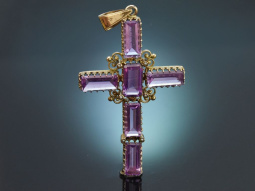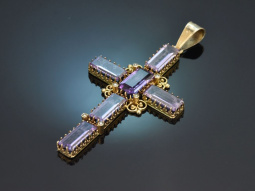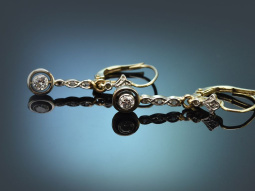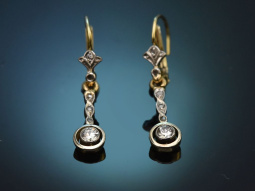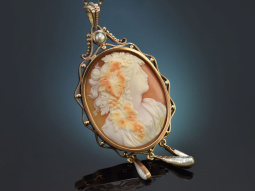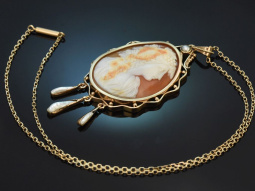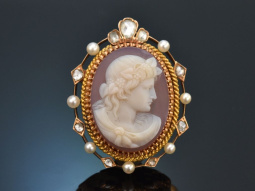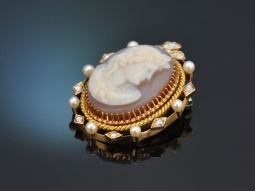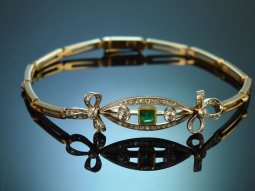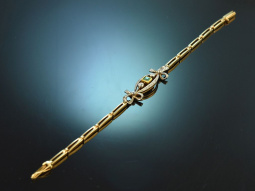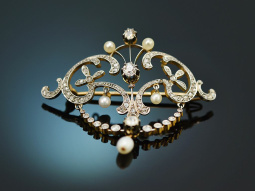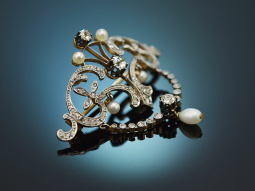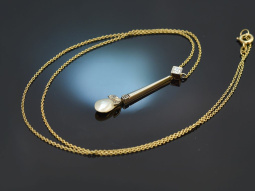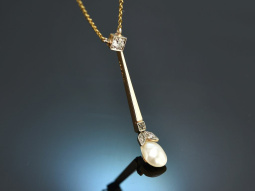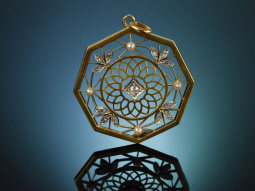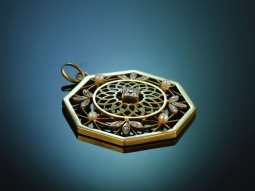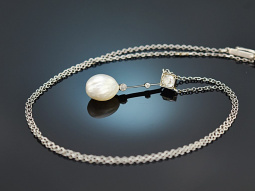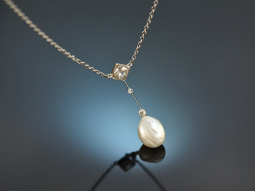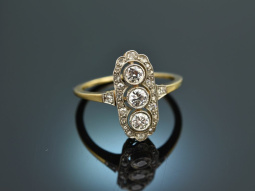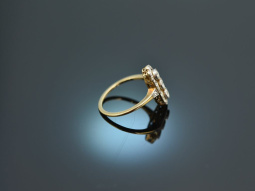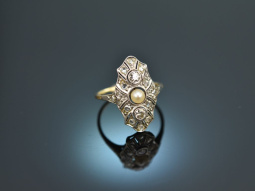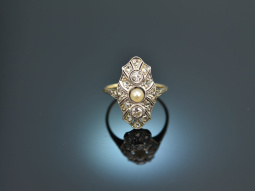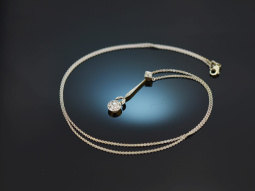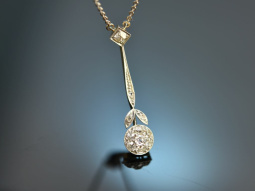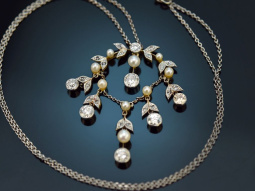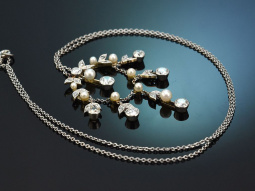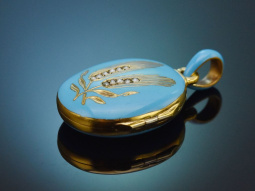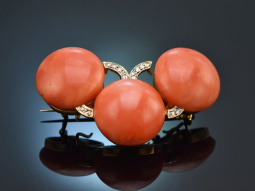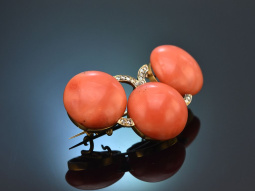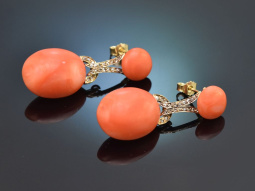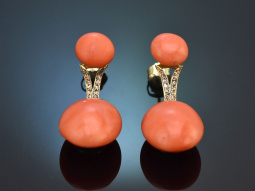Historism & Belle Époque
(1850-1915)
Jewellery from the second half of the 19th century, the period of so-called historism, was characterised by an omnipresent recollection of past centuries. Imitation, combination and reinterpretation of characteristic forms and elements from earlier eras dominated the designs of the time more than original, new designs and ornaments. The Belle Époque, on the other hand, ushered in the new century with sparkling elegance, delicate gemstone settings and glamorous jewels, reflecting a decade of joie de vivre. Learn more »
Historism: jewellery between contemplation and modernity
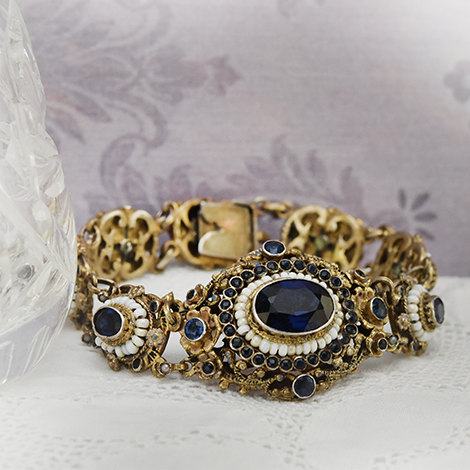
During historism, the formal language of classical antiquity, the Renaissance and Gothic periods as well as the Baroque and Rococo eras were used and incorporated into high-quality jewellery. Sometimes the styles of different times were combined eclectically, which led to an interesting reinterpretation of the past. In terms of form, people looked backwards. However, technology and craftsmanship were clearly oriented towards modernity, as industrialisation also became increasingly relevant for jewellery production in the second half of the 19th century. Industrially produced jewellery was now also accessible to broader sections of society, as jewellery parts could now be produced by machine in large numbers and later assembled by hand into distinctive pieces of jewellery.
In contrast, excellent jewellers such as Louis Francois Cartier, who founded the world-famous brand in Paris in 1847, met the high demands of a wealthy clientele.
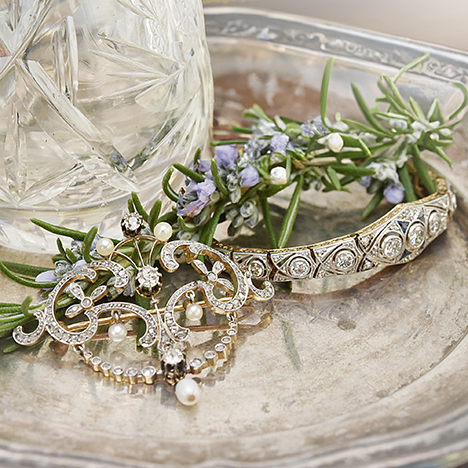
The Belle Époque: exuberance and splendour
The years around 1900 have gone down in history as the ‘Belle Époque’, the so-called beautiful era. This peacetime between the Franco-Prussian War and the First World War was characterised by exuberance and joie de vivre. People attended revues and theatre shows and enjoyed the numerous occasions to celebrate life. Diamonds sparkled next to the glow of crystal chandeliers.
The jewellery designs of the time were as splendid and glamorous as the galas they were worn to. Elegance and magnificent gemstones, floral shapes in the so-called ‘Garland Style’ are characteristic of the Belle Époque and were primarily orientated towards the formal language of Classicism and the Napoleonic Empire. In Great Britain, the era is also referred to as Edwardian, as it falls within the reign of King Edward VII from 1901-1910.
